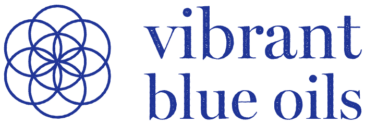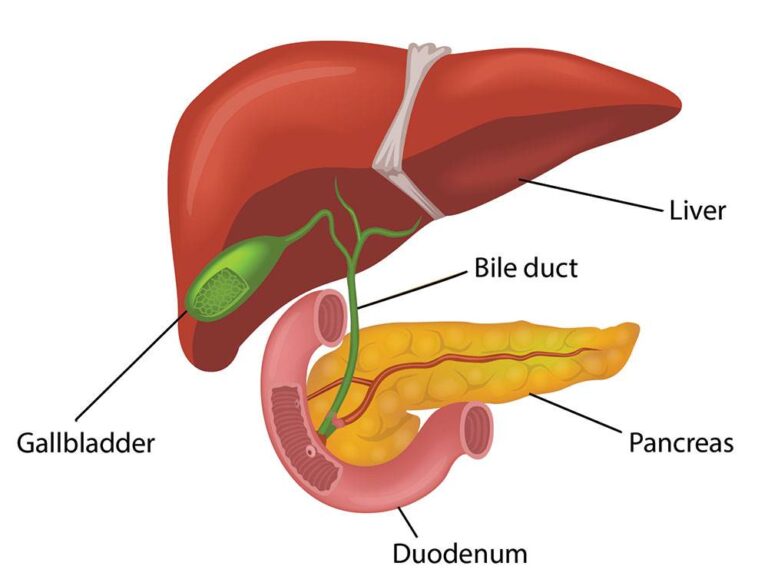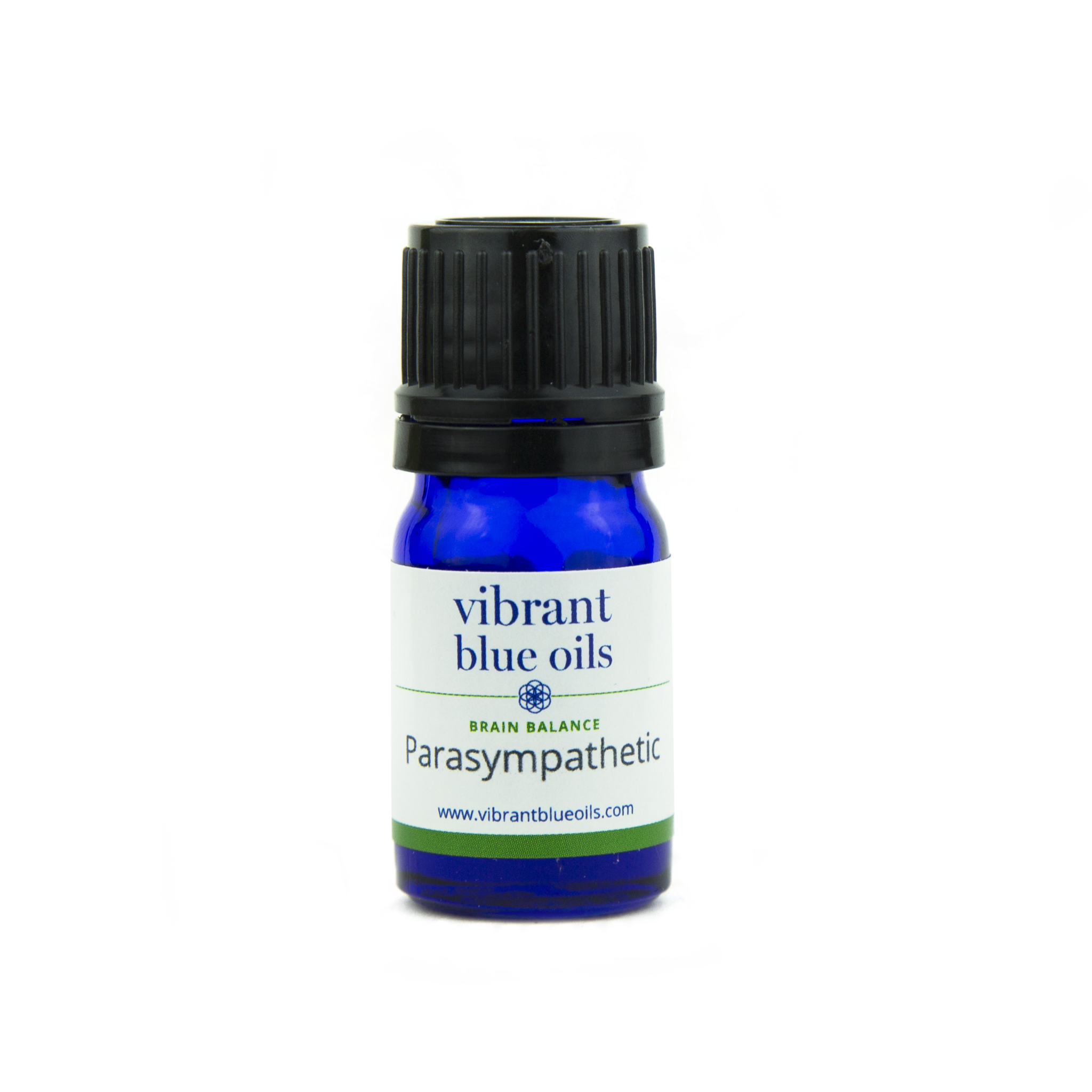Your gallbladder is a small, pear-shaped organ tucked behind your liver that stores and concentrates bile, a fluid made in the liver that helps the body break down fat and carry toxins (including old hormones) out of the body. Your gallbladder performs several important functions including:
- Enabling fat digestion
- Supporting absorption of fat soluble antioxidants and vitamins A, E, D and K
- Assisting in the removal of cholesterol from your body
- Supporting the removal of toxins that have been broken down by the liver
When the bile thickens – from a low fat diet, too much toxicity, estrogen dominance, or chronic stress – it disrupts the flow and elimination of toxins from the body. Gall Bladder™ supports optimal gallbladder health, improving the viscosity of the bile, allowing better fat digestion and elimination of toxins and old hormones.
That said, Gall Bladder™ essential oil blend is designed to improve gallbladder function. If you have had your gallbladder surgically removed, Gall Bladder™ is not the best blend for you. But please do not fret. We offer several other essential oil blends that help support healthy digestion and detoxification whether or not your gallbladder is still in your body or not.
My gallbladder has long been the Achilles heel in my own health challenges. I am therefore extremely well-versed from both a clinical and personal perspective on strategies that help support healthy gallbladder function if your gallbladder has not been removed and healthy digestive and detoxification function if your gallbladder has been removed.
The intention of this blog post is to share the best strategies to support gallbladder function (with or without a gallbladder).
How Gallbladder Removal Impacts Digestion and Detoxification
Gallbladder removal does not impact liver function. Your liver will continue to manufacture bile, but when you remove your gallbladder, there is no longer a place to store it or concentrate it.
Your gallbladder acts as a reservoir, storing and concentrating bile when you are not eating for a long period of time, such as at night when you are sleeping, and releasing it into your small intestine when food is present.
Also you have a limited amount of bile available. Without the gallbladder present to impede the constant release, bile will instead slowly and continually trickle into the intestines, increasing the risk of diarrhea while impeding the absorption of important nutrients.
In the healthy digestive process, as food travels into your small intestines, cells that line your intestinal walls “sense” the fats and amino acids in the food and release a hormone called CCK (cholecystokinin) which breaks down to Chole= bile, Cysto= sac, Kinin= mover. This bile sac-moving hormone signals the gallbladder to squeeze forcing the bile into the upper intestines where it helps to emulsify the fat—making it easier to absorb.
Bile does to fats what dish detergent does to grease. It’s an emulsifier. Bile breaks down fats into teeny tiny droplets, which gives fat-digesting enzymes more surface area upon which to do their work.
With a healthy gallbladder, proper amounts of bile are released into the digestive tract as needed. Without a gallbladder, there is a continuous trickle of bile into your system regardless of the presence or absence of fat. The failure to match bile output to fat presence can compromised your ability to properly digest fat. It’s like a leaky faucet that drips constantly, but that you can never get to turn on full blast when you need to.
This means that if you eat a fatty meal, you will not be able to secrete a large enough amount of bile into your intestines, therefore the fat will be poorly digested. So, even though you will have the same amount of bile in your body, you will not have as much bile in your intestine after your gallbladder is gone. The bile is constantly being delivered into your intestine instead of being stored which means that you will not digest food as well.
This can present as more frequent bowel movements or symptoms like diarrhea, bloating, nausea or indigestion.
If your ability to digest fat is compromised, it can also contribute to deficiencies of essential fatty acids, including omega 3 and omega 6 fats, and fat soluble vitamins, such as vitamins D, E, A and K. Many antioxidants are also fat soluble. For example, lycopene, lutein and carotenoids are all fat soluble.
Symptoms of poor fat digestion can present as dry, brittle hair; dry skin and premature aging of the skin; weak nails and painful joints. Essential fatty acids are also important for healthy brain function and can influence mood, anxiety, depression and cognitive function.
Gall Bladder Support (for those both with and without a gallbladder)
There is a lot you can do to both to keep your gall bladder healthy and to support healthy digestive and detoxification function even if your gall bladder has been removed. I compiled my favorite techniques that I use daily.
Supporting Your Liver
A missing or compromised gallbladder can also place a greater burden on your liver, increasing your risk of developing a fatty liver. Healthy liver function contributes to healthy bile production.
There are numerous supplements that can be helpful for the liver.
For example, milk thistle has been used for years to treat liver and gallbladder disease. It is believed to contain bioflavonoids (antioxidants) called silymarin, which stop toxins from attaching to the liver cells. Research has found that milk thistle can accelerate the growth of your liver cells and help you regain lost liver mass.
Dandelion is also considered to be a liver tonic. Studies conducted with dandelion leaf and root found that the herb’s extract can fight liver fibrosis or liver scarring caused by a buildup of scar tissue in response to liver inflammation or damage. Dandelion extract can also prevent fatty liver disease caused by fat accumulation in the liver.
These herbs can be assimilated as teas or supplements. For example, Quicksilver Scientific offers Liver Sauce® formula includes milk thistle and dandelion along with other liver supporting herbs, including Orange essential oil.
Essential Oils to Support Your Liver
Essential oils help keep plants healthy by moving vital fluids and energy. They perform similar functions in your body, helping to move energy and prevent stagnation. When your liver becomes stagnant, from physical toxins, stress or anxiety, it impedes detoxification. Essential oils are a powerful tool to help shift stagnation and improve flow of energy and toxins through the liver and the gall bladder.
Essential oils can help shift your body into alignment so toxins do not backlog into your bloodstream, but flow out of your body. You can read more about how to detox directionality here. Topically applying essential oils to specific points on your skin can activate energy flow directly and quickly, stimulating your liver and gall bladder to help toxins flow out of the body.
The super small size of essential oil molecules allows them to be easily transdermally assimilated into the organs, to help promote directional flow of bile and toxins. The following essential oil blends are especially beneficial:
Parasympathetic®: Your body needs to be in the parasympathetic nervous system “rest and digest” state to support healthy liver function. The parasympathetic state turns on the housekeeping wave of digestion, allowing the bowels to move and eliminate toxins. If you are suffering from constipation, toxins from the liver and gallbladder do not leave the body, but instead are reabsorbed. This blend is especially helpful if your gallbladder has been removed as supports healthy bile flow.
To ensure optimal digestion in the parasympathetic state, you can apply the Vibrant Blue Parasympathetic® blend to the vagal nerve (behind the earlobe on the mastoid bone) before meals to stimulate the parasympathetic nervous system “rest and digest” state.
Liver™: Your liver is your most overworked organ in your body. It works along with your kidneys, gallbladder and gut to help your body process fats and eliminate toxins.
Your liver actually neutralizes and alters the chemical structure of toxins such as drugs, nicotine, caffeine and chemicals so that they are water-soluble – and then excretes them through the bile, causing them to be harmlessly ushered from the body. Your liver can be overwhelmed by toxins, causing it to become congested and inflamed.
Liver™ helps support optimal health and vitality of the liver. Formulated with oils that help stimulate, strengthen, and tone the liver, including German Chamomile, which stimulates bile secretions and supports liver detox, Ylang Ylang, which helps detoxify your nervous and digestive systems and Peppermint, which helps you detoxify through your respiratory and digestive systems.
Apply Liver™ directly over the liver (right side beneath the breast) 2-3 times daily. You can also combine Liver™ blend with castor oil – just add 3 drops of Liver™ to 1 tsp of castor oil and rub it over the liver before bed. Castor oil is notoriously messy, so you can either: (1) cover it with a piece of flannel and plastic wrap and apply heat from a hot water bottle (avoid the electricity of heating pads) for 20-30 minutes, (2) wear a ratty t-shirt and let your body eat work it’s magic (3) climb into an Epsom salt bath with the castor oil and Liver™ oil and benefit from layering 3 healing strategies at the same time.
Liver Support™ helps us detoxify emotions. The detoxification process occurs on a physical, spiritual and emotional level and can help uncover and express feelings, especially hidden frustrations, anger, resentments, or fear. Often, the more toxins a person releases, the more stored emotion that is also released. Dr. Dietrich Klinghardt noticed this pattern in his work with thousands of chronically ill patients and noted that “for each unresolved psycho-emotional conflict or trauma there is an equivalent of stored toxins and an equivalent of pathogenic microorganisms. To successfully detoxify the body the three issues have to be addressed simultaneously.”
It is important that these emotions are allowed to be processed and released to avoid causing additional stress that would undermine the detoxification process and essential oils make excellent tools to help gentle release and detoxify emotions. For example, our key organ of detoxification, the Liver, holds onto traumatic experiences and negative emotions, like anger, impatience, resentment and frustration creating emotional blocks cause the liver to become sluggish. Processing and releasing these negative emotions are an important step in opening the drainage pathways. Learn more about importance of processing unresolved emotions HERE.
To help you move through and release anger and negative emotions from the cells of the liver, apply 2 -3 drops of Liver Support™ over the liver, the heart or around the earlobes. You can also gently inhale Liver Support™ for 3 – 7 breaths, breathing out any negative emotions on the exhale. For more tips on detoxify emotions, read this article
Gall Bladder™: Once the liver produces bile, it is stored and concentrated in the gall bladder. Toxin flow and bile flow are completely linked. If you don’t have adequate bile flow you’re not dumping toxins from the liver and they start building up in the liver cells.
Bile also helps to dissolve fat you consume as part of your diet. Your cell membranes are also made out of fat. Quicksilver Scientific Founder Chris Shade notes that if bile doesn’t flow out of the liver, bile salts build up in the liver where they risk damaging liver cells so the liver dumps toxins back into the bloodstream.
Unfortunately, stress, hormones, and excess fat consumption can make the bile thick, viscous and stagnant which impedes its ability to flow. If you try a keto diet and experience a lot of nausea, this is a sign of gall bladder issues. To support the optimal flow of bile from the Gall Bladder, apply Gall Bladder™ on the right side of the body under the bra under-wire or along and slightly under the right rib cage, can help ease bile flow for optimal fat assimilation and absorption.
Other Supplements
Bitters
Bitters are extracts of medicinal plants and herbs that stimulate your liver to produce and secrete more bile and work more efficiently. Many bitter herbs have liver-protecting and bile-boosting properties as well. For example, Milk thistle has been used as a liver strengthener for centuries. The silymarin flavonoid in this herb is able to maintain the health of liver cells and neutralize the harmful effects of toxins. Dandelion also helps the liver by supporting bile production and boosting the immune system. Wormwood and yellow dock are other bitter herbs that contain compounds supporting the liver.
The discovery of bitter receptors within the gastrointestinal tract strongly suggests that the bitter taste can have a significant influence on the overall health of the digestive system, including the liver and gall bladder. More specifically, bitter herbs support your body’s natural ability and function to produce the digestive enzymes, bile and other secretions it needs to digest meals.
You can consume bitters, either in a tincture (I like Dr. Shade’s BitterX), a tea made from bitter herbs like dandelion or milk thistle or bitter foods, like lemons, limes, radicchio lettuce, chicory, endive and dandelion leaves before meals. A small salad filled with bitter herbs like chicory, arugula, radicchio, or even peppermint (peppermint is considered a bitter) can stimulate bile flow and support your liver and gallbladder.
Binders
Binders are solid insoluble particles that pass through the gut unabsorbed by the bloodstream. They line the gut to attract and bind toxins leaving the liver via the bile as it flows into the intestines ensuring a continuous flow of toxins out of the body with little to no side effects.
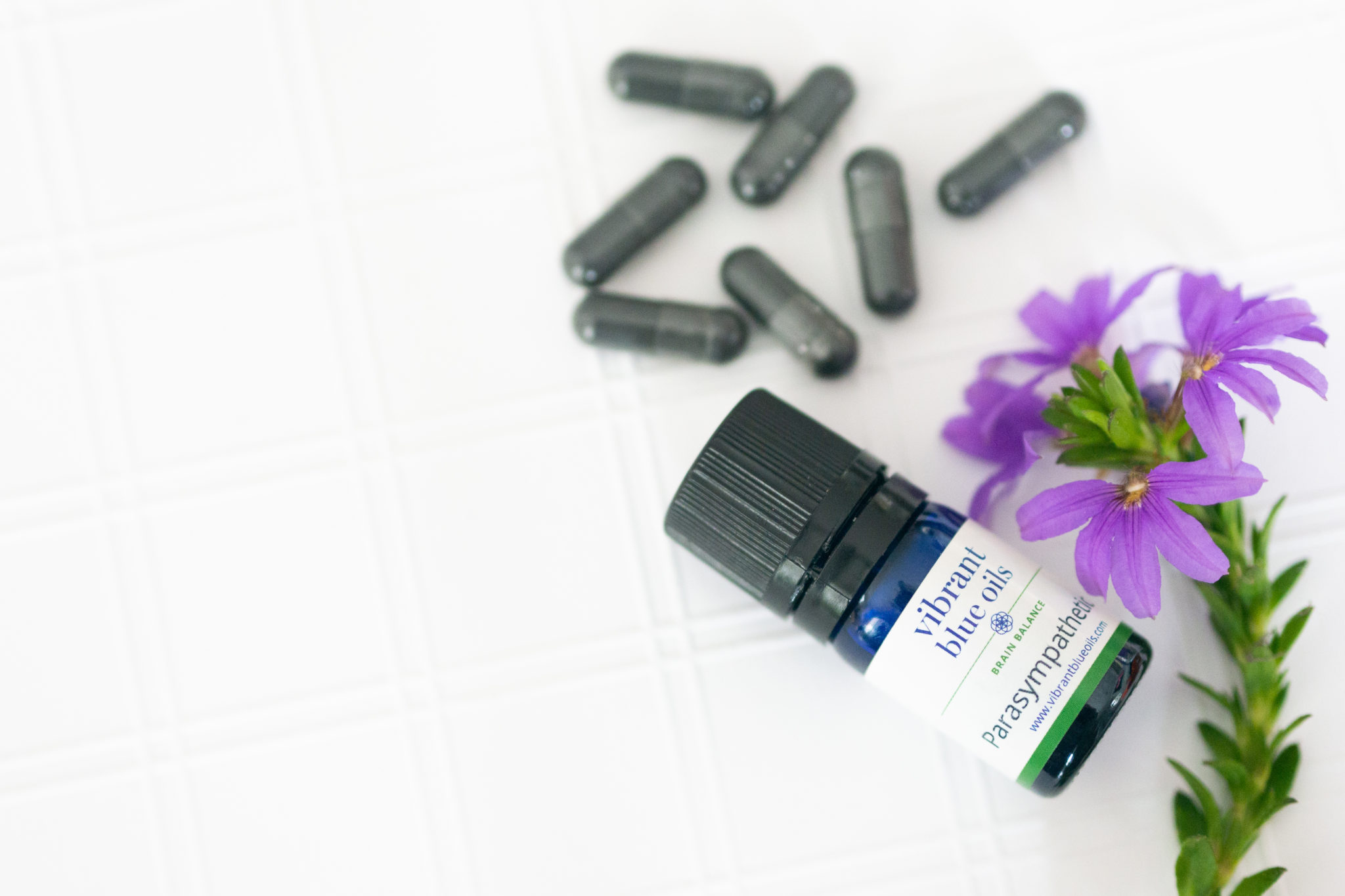 When toxins are not “bound” for excretion through the bowels, they are prone to “enterohepatic recirculation.” This means that toxins already processed in the liver are reabsorbed in the intestines and “recirculated” to the liver to be filtered again and again. This repeated process is energy depleting and further compromises liver and gallbladder function. Binders help your body go from getting stuck on “repeat” to “fast forward” in eliminating toxin buildup and recirculation.
When toxins are not “bound” for excretion through the bowels, they are prone to “enterohepatic recirculation.” This means that toxins already processed in the liver are reabsorbed in the intestines and “recirculated” to the liver to be filtered again and again. This repeated process is energy depleting and further compromises liver and gallbladder function. Binders help your body go from getting stuck on “repeat” to “fast forward” in eliminating toxin buildup and recirculation.
Using a binder on a regular basis spares your liver and gallbladder the work to process a toxin. Instead, it is escorted right out of the body. Similar to a “free hall pass,” a binder cannot bind every toxin, but it can significantly lighten the load and streamline the process. My favorite binders are:
CellCore Biotoxin Binder – This is a great binder for helping to mop up and bind to biotoxins from mold, fungus, yeast, bacterial and viral by-products, ammonia, sulfur, aldehyde, and microplastics. It is formulated with a proprietary blend of bioactive carbon, wild crafted yucca root, humic and fulvic acids that are biological building blocks to repair and heal the body. The best part – you can take it with food and other supplements!
CellCore HM-ET Binder – Supports heavy metals and environmental toxins. This is my favorite binder to help clear naturally occurring and man-made environmental toxins (i.e. lead, mercury, radon, formaldehyde, benzene, glyphosate, BPA, phthalates, and cadmium. Because of the kidneys’ ability to reabsorb and accumulate toxic heavy metals, they are uniquely vulnerable to these elements. Removing heavy metals from the kidneys helps stave off potential nephropathy. It is formulated with a proprietary blend of carbon that contains extracts of fulvic acid and extracts of humic acid.
You can order these binders at https://cellcore.com/ and use patient direct code: IJNZUYNT
Bile Salts
Bile contains bile salts, along with water, electrolytes and other substances like cholesterol, bilirubin and phospholipids. Supplementing with bile salts can help support digestion and nutrient assimilation, especially of fat soluble nutrients like Vitamin A, E, D, K.
- If you still have your gallbladder bile salts help to promote gallbladder and liver function by reducing inflammation of the bile ducts and help normalize blood flow.
- If you have had your gallbladder removed you are no longer producing bile salts which help to eliminate cholesterol and toxic compounds and play a role in cholesterol regulation.
Bile salts also help to relieve digestive symptoms, like gas and bloating, affect gut bacteria, control blood sugar, trigger the release of glutathione, eliminate bilirubin from the body and dissolve and prevent the formation of gallstones which are composed mostly of cholesterol and particles.
Bile salt supplements, like Biotics Beta Plus, should be taken with a meal so they can aid in the absorption and digestion of fats and fat-soluble vitamins.
Chanca piedra
Chanca piedra is an herb used to help dissolve kidney and gallbladder stones. It is also used for various disorders of the urinary tract, digestive tract, and liver and is thought to contain chemicals that help relieve spasms, increase urine, and have activity against bacteria and viruses.
Other Supportive Strategies
Coffee Enemas
Coffee enemas can help stimulate the gallbladder to contract which helps open the bile duct system, flushing stagnant bile from the liver and gallbladder, which is especially helpful for both those with and without a gallbladder. Research found that coffee can improve gallbladder contraction by around 33% or more. This really helps to move out the toxins the liver wants to expel.
Research found that coffee is a significant source of antioxidants (lighter roasts contain more antioxidants) that can lower inflammation in the liver and help the liver cell regenerate. (Study)
Coffee contains key constituents, like Kahweol palmitate and Cafestol palmitate, that help increase the level of glutathione in the liver, which helps your body detoxify and remove heavy metals and chemical carcinogens. The constituent theophylline reduces inflammation in the liver.
Coffee also contains caffeine which helps dilate blood vessels to dramatically increase the benefits of the coffee enema. More specifically, coffee constituents to go straight to the liver through hemorrhoidal veins, located about 6 inches inside the rectum which directly connects to your hepatic portal, which leads straight to the liver. The caffeine in the coffee dilates these blood vessels which increases the absorption of the coffee, helping to stimulate the liver to release bile.
Toxins in your bile can build up and create a sludge that blocks your bile duct, which prevents your bile from flowing into your intestines and causing them to build up in your liver, contributing to liver inflammation. Coffee enemas help unblock the bile duct and release any toxic backlog.
Your body likes to recycle bile. You can reuse this bile up to 18 times! It takes a lot of energy to make, and your body wants to be efficient. Unfortunately, sometimes the toxins that your liver tries hard to remove can get reabsorbed. It’s important to take a binder before and after the enema to mop up toxins released from the bile duct. Binders attach to toxins and escort them safely out of the body.
How To Complete A Coffee Enema
Supplies:
- Coffee – choose organic, light roasted or air roasted whole coffee beans (not decaffeinated coffee!)
- Pure Water – distilled or filtered to remove chlorine, fluoride and other chemicals
- Coffee enema bucket or kit – I like this one
- Coconut oil, K-Y gel or some other lubricant for the end of the enema hose
- Soft towels for the bathroom floor
- Paper towels
Instructions
- Bring 4 cups of pure water to a boil.
- Measure 4 tablespoons of organic coffee grounds into a French press (if available).
- Pour the boiling water in and let sit for 20 minutes.
- Press down on the French press or strain with cheesecloth. (Using a paper coffee filter may remove some of the very important kahweol and cafestol palmitate that makes the coffee enema so beneficial!)
- Let the coffee cool! You want it at body or room temperature.
- Pour the solution into your enema bucket or kit. Make sure the bucket isn’t too high. The solution will flow too fast. 18 inches is ideal.
- Place towels on the floor and lie down on your right side with your knees bent.
- Apply the lubricant to the end of the enema hose. Gently insert the hose about 6 inches into the rectum.
- Unclamp the hose and slowly let about half of the enema solution flow in, about 2 cups. Stop a bit sooner if you feel “full.”
- Try to hold the solution in for about 15 minutes. Gently release it into the toilet.
- Repeat with the remaining two cups of the solution if you’d like.
The best time of day for a coffee enema is in the morning after you have already had a bowel movement. Coffee is known to stimulate the brain, so doing this too late in the day could hinder your sleep patterns.
Castor Oil Packs
Castor oil is a fabulous tool to help reduce liver and gallbladder inflammation and soften the tissue in the liver and gallbladder. It helps to stimulates the liver and unblock stagnant bile and bile ducts, while also opening your bowels to allow for easier elimination of bile sludge and toxins.
Castor oil is 90% Ricinoleic acid, which is a unique and potent immune booster that helps inhibit viral, bacterial, fungal, yeast or molds.
Supplies
- Castor oil – It’s important to buy quality cold-pressed, organic, unrefined castor oil that is free from hexane/preservatives/additives. Because castor oil is so detoxifying, it is important to purchase it in a glass (not plastic) container. I like this one.
- Cotton or flannel cloth (unbleached, organic) large enough to cover the abdomen
- Plastic wrap or a 13-gallon trash bag cut open along its edges
- Heat source (hot water bottle, heating pad)
- Glass container (e.g. mason jar) or zip lock bag to store pack after use
- Old towel, shower curtain, or sheet
- Baking soda
Instructions
- Prepare the area where you’ll lie down with an old towel, plastic shower curtain, or sheet (as castor oil is messy and will stain fabric).
- Saturate the wool or cotton cloth with castor oil; wring out any excess; it should be thoroughly wet, but not dripping.
- Lie down on the old towel, curtain, or sheet; pour 1T of castor oil into your palm, add a few drops of Liver™, Gall Bladder™, Estrogen Balance™ or Hormone Balance™ blend and apply directly over your liver (right side of the body, under the breast). Apply the castor oil pack to your abdomen; place a piece of plastic saran wrap or trash bag over the cloth.
- Apply heat source (hot water bottle, heating pad).
- Relax for 20 – 40 minutes;
- Remove pad and wash skin with a mixture of baking soda and water to remove the castor oil.
- Store wool flannel in a glass container or zip lock bag in the refrigerator; it can be reused up to 20x or several months; re-saturate with each use. 8. Discard when the cloth smells rancid or after 20 uses.
Easy Castor Oil pack (this is what I do):
- Massage castor oil and Liver™, Gall Bladder™, Estrogen Balance™ or Hormone Balance™ essential oil blend into your abdomen prior to bedtime.
- Wear an old t-shirt or pajama shirt to bed (castor oil can stain clothing).
- Go to bed; body heat overnight will promote absorption.
Frequency: Aim for 3–4 times per week.
Epsom Salt Baths
Epsom salt baths offer an easy, accessible way to activate your parasympathetic nervous system and trigger natural detoxification.
Epsom salt is a naturally occurring mineral compound of magnesium and sulfate that helps enhance the detoxification capabilities of the body, improve circulation, calm and sedates the nervous system, relax muscles and reduce swelling and inflammation. Studies have shown that magnesium helps calm your nervous system, alleviate depression and calm anxiety. Magnesium is easily absorbed through the skin and into your blood stream, especially when delivered through a warm bath.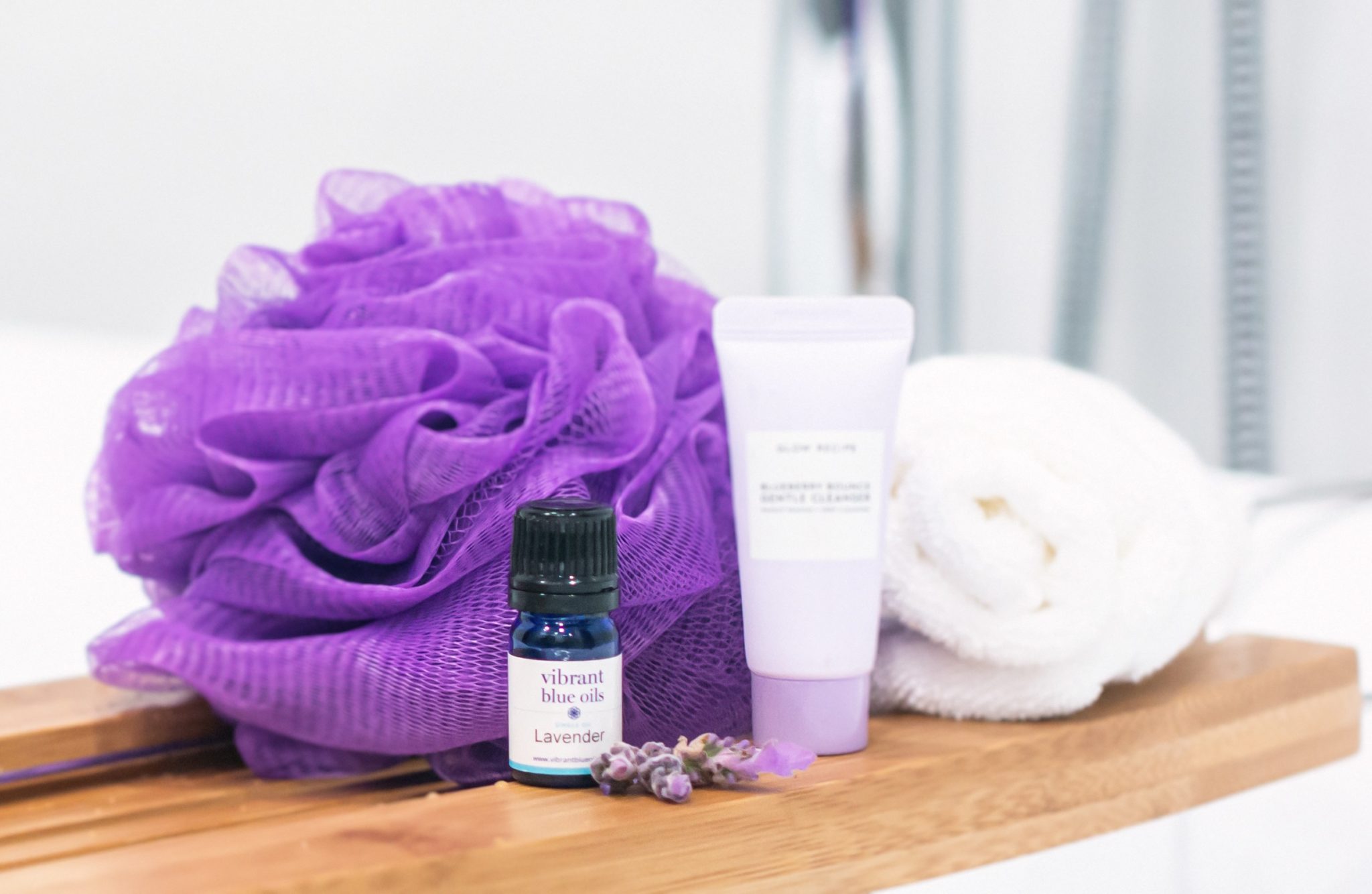
Water is the optimal carrier for magnesium as it both absorbs and magnifies its healing potential. One teaspoon of water can actually absorb 4 teaspoons of nutrients. This is one of the reasons that bone broth is so healing.
A warm bath with magnesium sulfate from Epsom salt and sodium bicarbonate from baking soda, which helps increase alkalinity and balance your electrical charge or pH, can create a similar healing experience. Increased alkalinity can also reduce symptoms of gallbladder distress including nausea, queasiness, GI distress and headaches.
The combination of water, heat and minerals opens skin pores, allowing them to absorb the minerals and flush out harmful toxins through the sweat glands. Layering in specific essential oils, like Lavender or Rose can further enhance the grounding experience.
My favorite Healing Bath Recipe:
* *Mix Essential Oils with Epsom Salt before adding to bath water for optimal absorption
Diet
Modifying your diet to include more vegetables and eliminate processed foods can also be supportive to both healing your gallbladder and supporting your body after your gallbladder has been removed. For example:
- Beets are rich in betaine, which stimulates liver cell function and provides a protective effect for the liver and bile ducts.
- Artichoke leaves contain caffeylquinic acids, which promote bile flow. The simplest and least expensive way to benefit from these compounds is to eat the artichoke leaves.
- Broccoli sprouts can decrease bilirubin deposits in the gallbladder to reduce the likelihood of gallstone formation.
- Apple cider vinegar contains malic acid which can help to soften any gallstones as well as thin out the bile over time. Take a few teaspoons to tablespoons in some water or my personal favorite, Paleo Valley’s Apple cider vinegar, prior to meals regularly for a time.
Neutralize Surgical Scars
If you have had your gallbladder removed, my friend Dr. Christine Schaffner stresses that you need to have the scars neutralized so they do not become an interference fields, or a disruption in signaling pathways in your body.
All cells have an electrical potential across their cell membranes. Cells of a scar have lost their normal electrical potential which may cause an interference of normal functioning. This can disturb nerve fibers and impact the overall autonomic nervous system, interfering with your body’s ability to function and heal optimally.
Scars can also disrupt the meridian system when they cross a meridian or acupuncture point. By crossing a meridian, or lying along its course, the scar impacts the energy flow throughout that meridian. Even small scars (especially around the midline of the body, like those from gallbladder surgery) can disrupt the flow of information within your body. Interference fields can be the key to alleviating a chronic problem in another seemingly unconnected part of the body.
Naturopathic Doctor News & Review (NDNR) explains this nicely: “A scar is a chaotic neural phenomenon, with a sympathetic-dominant charge firing in a disturbed “fight or flight” manner… When skin is cut as a result of injury or surgery, so are densely packed sympathetic nerve fibers. These nerves may heal poorly, disrupting the overall function of the autonomic nervous system. Signals may be transmitted improperly or nerves may join in an aberrant fashion.”
How to Neutralize Surgical Scars
There are a number of strategies that can be employed to help neutralize scars including:
- Essential Oils: Plants and the concentrated essence of plants found in essential oils may help regenerate damaged skin tissue and speed the healing process of scar tissue. For example, Frankincense, Helichrysum, Lavender, and Tea Tree oils may help provide antibacterial, antifungal and antiseptic properties to the skin. You can topically apply by itself or in combination with wheat germ oil or sesame seed oil.
- Wheat germ oil and sesame seed oil contain vitamins D and E, both of which are essential to skin health and treating scars. Massaging wheat germ oil or sesame seed oil into your scars once or twice per day (ideally after showering and again before bed each day) may help restore normal ionic function of the tissue and normal energy flow through the meridian system. These benefits are amplified when used in combination with laser treatments.
- Laser treatment uses focused light therapy to either remove the outer layer of the skin’s surface or stimulate the production of new skin cells to cover damaged skin cells.
- Neural Therapy: The injection of local anesthetic into a scar may help break up adhesions. The intention of a neural therapy injection is to alter the autonomic nerve conduction that creates the disturbance by normalizing the membrane potential. When procaine is injected into a nerve, anesthesia occurs due to temporary hyperpolarization (inhibition). When the anesthetic wears off, the nerve repolarizes with a now-normal membrane potential. Neural therapy treatment might be regarded as an “autonomic reboot”. I highly recommend Dr. Christine Schaffner and her colleagues at Immanence Health for this protocol.
Featured Oils:
Ready to get started? Click the links below to order today:
- Estrogen Balance™ available here
- Gall Bladder™ available here
- Hormone Balance™ available here
- Lavender available here
- Liver™ available here
- Liver Support™ available here
- Orange available here
- Parasympathetic® available here
- Rose available here
Resources:
- https://paleovalley.com/offers/apple-cider-vinegar-complex-promo/pvfriend15?oid=3&affid=653&source_id=guide&sub1=liver
- https://www.sciencedirect.com/science/article/abs/pii/S1521691816000172?via%3Dihub
- https://www.ncbi.nlm.nih.gov/pmc/articles/PMC4539063/
- https://onlinelibrary.wiley.com/doi/abs/10.1002/ptr.3121
- https://www.quicksilverscientific.com/all-products/liver-sauce/
- https://www.quicksilverscientific.com/all-products/bitterx/
- https://pubmed.ncbi.nlm.nih.gov/2393014/
- https://pubmed.ncbi.nlm.nih.gov/28581877/
- https://pubmed.ncbi.nlm.nih.gov/30613574/
- https://pubmed.ncbi.nlm.nih.gov/28351778/
- https://www.purelifeenema.com/on-sale-best-seller-purelife-usa-made-enema-kit-2-qt-304-stainless-steel/
- https://www.amazon.com/Heritage-Store-Christi-Moisturizer-Fragrance/
- https://www.ncbi.nlm.nih.gov/books/NBK209305/#:~:text=MAGNESIUM%20AND%20THE%20BRAIN,of%20the%20excitatory%20neurotransmitter%20glutamate
- https://www.healthline.com/health/magnesium-anxiety
- https://www.ncbi.nlm.nih.gov/books/NBK507265/
- https://ndnr.com/pain-medicine/pain-scars-and-neural-therapy/

